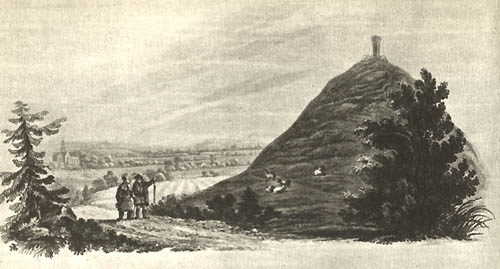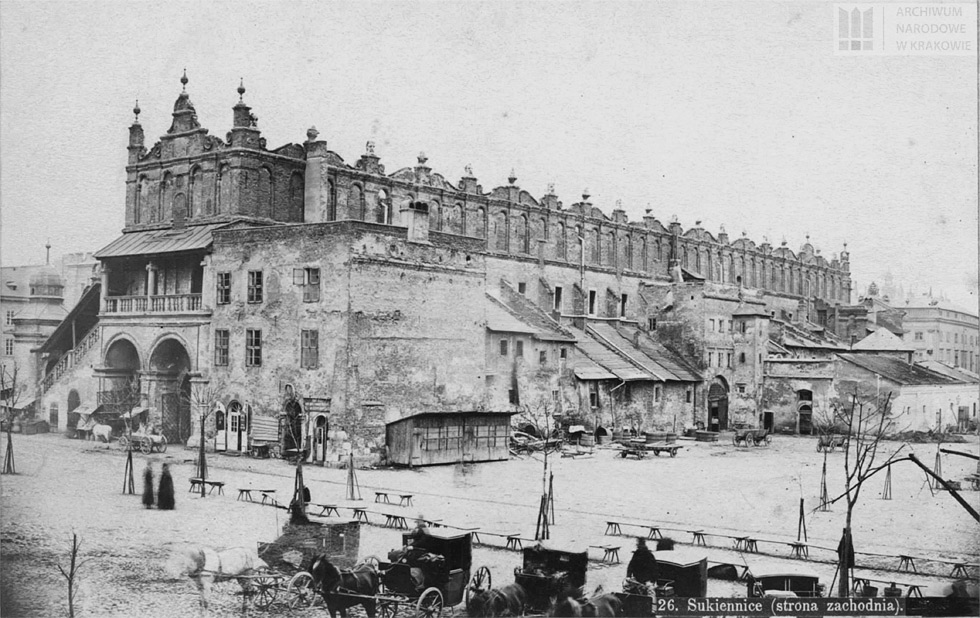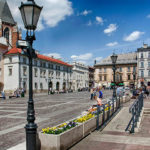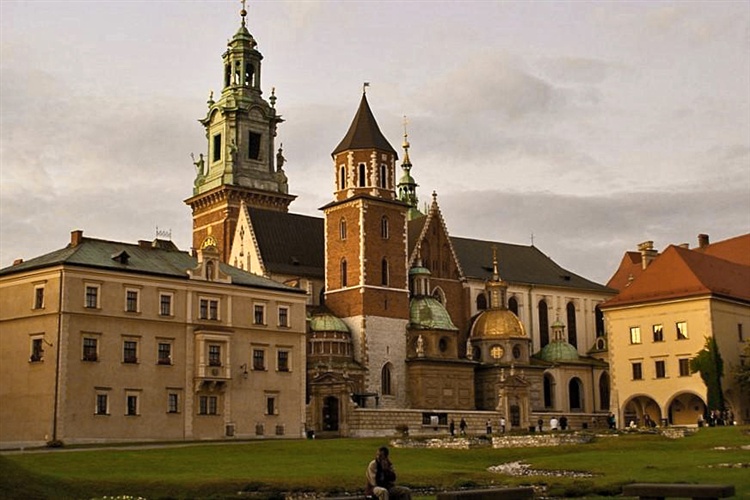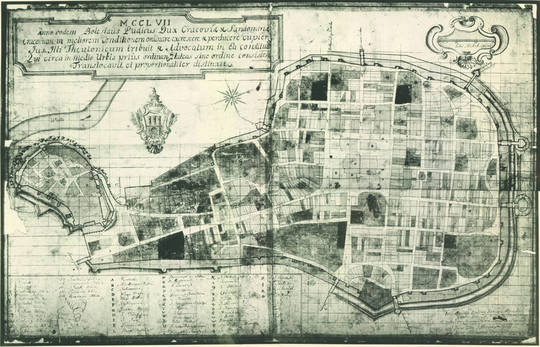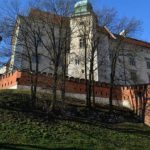Topografia Krakowa
Kraków położony jest 219 m npm, pod 50° 3′ 52” północnej szerokości i 1 h 19 m 50 s. długości od Gr., w dolinie największej rzeki Polski— Wisły. Tu zbiegają się trzy krajobrazowo różne typy geograficzne: od północy i zachodu rozciąga się wapienna i dolomitowa płyta Wyżyny Małopolskiej, od południa — fliszowy łańcuch Karpat, opadający ku dolinie Wisły, tworzy tzw. Podgórze Karpackie, od wschodu — rozwartym klinem ściele się dyluwialna Nizina Nadwiślańska.
Miasto położone jest w dolinie Wisły, która od Tyńca aż po sam Kraków ma charakter przełomowy, wijąc się, tworzy tzw. „meandry” (zakola), przebijające się wśród wzgórz.
Prócz Wisły oblewają miasto cztery jej dopływy: Rudawa, Prądnik, Wilga i Dłubnia.
Spadkiem procesów geologicznych są pokłady soli w Wieliczce; siarki — w Swoszowicach, powulkaniczne pokłady porfirów, melafirów oraz marmury w Miękini i Dębniku; węgiel, cynk, ołów, nawet srebro — w Olkuszu.
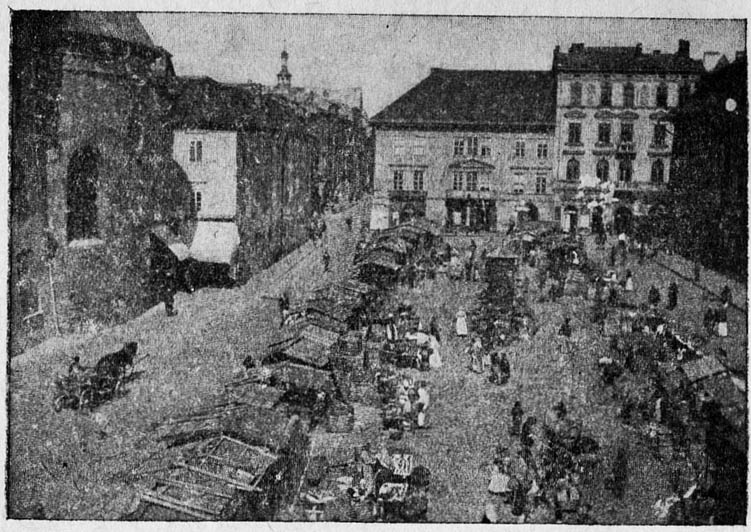
Bogactwo lasów z jednymi z największych zespołów leśnych: Puszczą Niepołomicką i lasami Olkusza, Parkami Narodowymi Tatr, Beskidów, Pienin i Ojcowa potęguje wspaniałość krajobrazu ziemi krakowskiej. Nawiane przez wiatr warstwy pyłu, stwarzając pokłady lessu, sprzyjają powstaniu gleby urodzajnej, warunkują osadnictwo ludzkie i rozwój rolnictwa.
Kraków i jego ziemia stają się terenem predestynowanym dla wczesnych warunków, sprzyjających powstaniu życia człowieka. Przeprowadzane ostatnio prace archeologiczne na terenie Krakowa dały szereg rewelacyjnych wyników. Na dziedzińcu zamku wawelskiego odkopano w wapiennych kieszeniach skalnych narzędzia pracy człowieka z doby paleolitu starszego (epoki kamiennej). Jest to niezbity dowód starego osadnictwa ludzkiego na terenie Krakowa, sięgającego ok. 200 tys. lat. Porównawczo przedstawia się to np. w stosunku do Półwyspu Skandynawskiego w ten sposób, że gdy na wzgórzu wawelskim, w starszym paleolicie żył już człowiek, Skandynawia nie posiadała jeszcze życia organicznego. W interesującej formie przedstawiono te problemy w Muzeum Historii Wawelu. Wykopaliska na Zwierzyńcu (Salwator) stwierdziły rozległy obszar pierwotnego osadnictwa na terenach Krakowa.
Tak, jak krajobraz samego miasta Krakowa jest przepięknie zróżnicowany, z jego wyniosłościami: Wawelem, Krzemionkami, wzgórzem św. Bronisławy, tak i okolice Krakowa, z pasmem Jury Krakowsko-Częstochowskiej, Jury Krakowsko-Jaworznickiej, Beskidem, Pieninami i Tatrami ilustrują bogactwo rzeźby terenu.
Ziemia Krakowska daje także przykład wielkiego zróżnicowania etnograficznego. Od Krakowiaków z ich barwnym strojem, muzyką, tańcem, sprzętem, zwyczajami, odbija ludność okolic Olkusza. Od nich różni się zasadniczo ludność podgórska, jak myśleniccy „Kliszacy”, oraz mieszkańcy Podhala, tak odmiennego w swym stroju i kulturze materialnej. Odrębny świat, u podnóża Tatr, tworzy lud Skalnego Podhala, którego folklor odbija się szerokim echem w muzyce, poezji i literaturze ogólnonarodowej. Region Żywca prezentuje bogactwo stroju mieszczan żywieckich.
Przyroda, człowiek, obyczaj i historia czynią tę prastarą Ziemię Krakowską celem wycieczek mieszkańców całej Polski, pragnących ją poznać.
